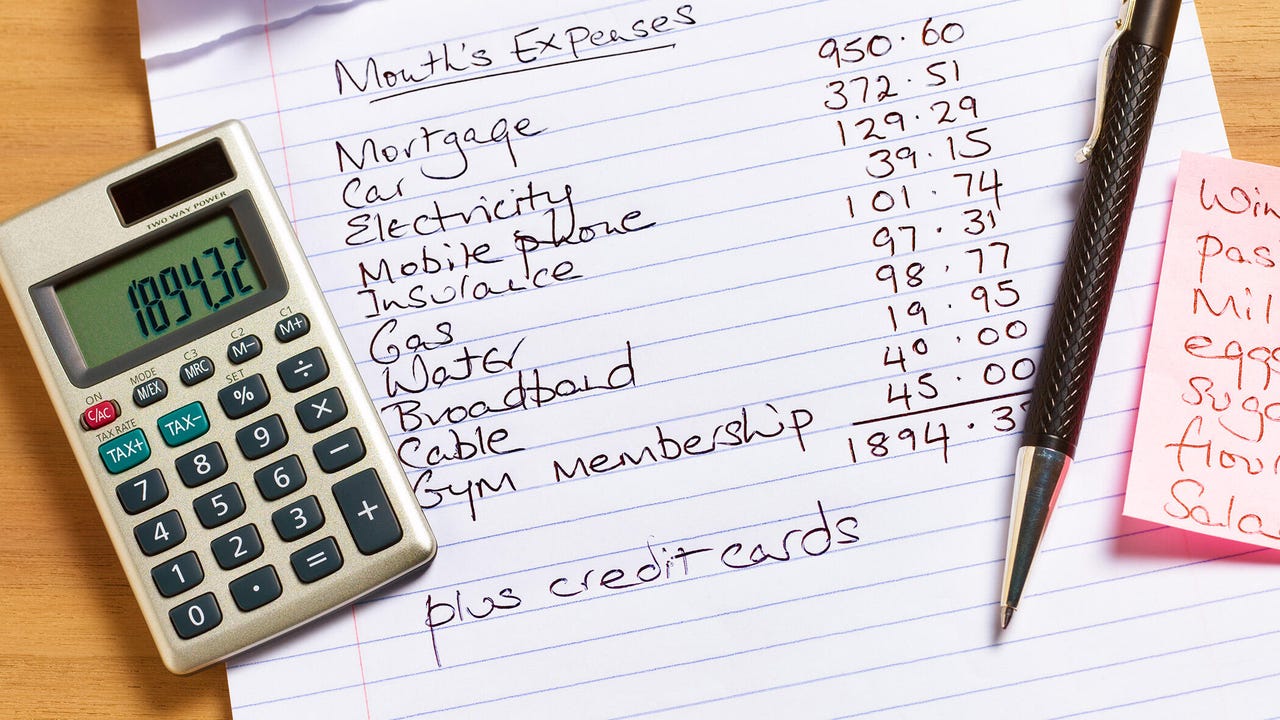'ZDNET Recommends': What exactly does it mean?
ZDNET's recommendations are based on many hours of testing, research, and comparison shopping. We gather data from the best available sources, including vendor and retailer listings as well as other relevant and independent reviews sites. And we pore over customer reviews to find out what matters to real people who already own and use the products and services we’re assessing.
When you click through from our site to a retailer and buy a product or service, we may earn affiliate commissions. This helps support our work, but does not affect what we cover or how, and it does not affect the price you pay. Neither ZDNET nor the author are compensated for these independent reviews. Indeed, we follow strict guidelines that ensure our editorial content is never influenced by advertisers.
ZDNET's editorial team writes on behalf of you, our reader. Our goal is to deliver the most accurate information and the most knowledgeable advice possible in order to help you make smarter buying decisions on tech gear and a wide array of products and services. Our editors thoroughly review and fact-check every article to ensure that our content meets the highest standards. If we have made an error or published misleading information, we will correct or clarify the article. If you see inaccuracies in our content, please report the mistake via this form.
How to create a grocery budget

While my kids were younger, we operated as a single-income home. It sounds bananas in this economy, and it's just as hard as it seems, but it's the reality for many families in the US. Having a budget to stick to is essential when you're living on a single income as a family or when you're trying to stretch your hard-earned money, which many of us are doing right now -- kids or no kids.
Inflation is at an all-time high, and the Federal Reserve is trying to stave it off by increasing interest rates. But Americans are still living in financial distress; most of us are feeling that pressure.
Also: How to cut your grocery bill by shopping online
According to the Bureau of Labor Statistics, we spent an average of $412 a month in groceries in 2020, with an average number of 2.5 people per consumer unit. That's about $164 per person a month in one household.
Americans are spending more on food each year, and inflation is the root cause of it. The share of disposable personal income spent on groceries in the US increased to 10.3% in 2021, compared to 9.4% in 2020. Food prices also rose by 10.8% from April 2021 to April 2022, the highest percentage increase since 1981.
How to create a grocery budget
You and your family need food to eat, so grocery shopping is a must. If you don't have a budget for household expenses including groceries, however, you're likely paying too much for them.
Step 1: Budget for groceries

We've all heard the phrase ignorance is bliss. But is it, really? The times when you ignore the balance on your bank account need to end. You don't want to continue experiencing mini-heart-attack moments -- ones spent wondering if you'll be able to afford what is in your cart.
A budget is a simple thing to ensure you never let your expenses exceed your income. But why doesn't it seem simple? The truth is there are many reasons why most people in the US struggle with budgeting: it's tedious, it takes mental energy, it doesn't seem as important as other tasks in the moment, and more. There is also shame associated with budgeting, particularly if you know you've already made financial mistakes.
Sitting down to make a budget can feel like a daunting task. But once you've done it, you'll walk away feeling accomplished and more at peace more often than not. You can go the old school route and use Excel spreadsheets for budgeting, or you can try one of these apps:
It's all about laying out what comes in on payday and how much you spend. A good way to do this is by looking at your debit or credit card statements for several full month and writing down how much you spent in each category: recurring expenses, groceries, gas, utilities, insurance, clothes, takeout, etc. Then add up the categories and compare the total to your income. This will give you an idea of how much you can afford to spend on each category -- with some money to spare for unforeseen expenses.
When you know how much you should spend, that little voice in your head will helpfully alert you when you're going over budget.
Step 2: Make a list, and stick to it
Many shoppers fall prey to temptation -- even if we don't want to admit it. It's easy to grab a pack of Oreos on an impulse, knowing full well you didn't budget for it. Part of curbing that temptation is to try to remove as much of it as possible.
Whether you wing dinner every night or plan every meal for the week, a grocery list is a good way to both remind you what you need and help you stick to the budget.
When you shop online, it's much easier to skip the cookie aisle. You make a list, search for each item on that list, add the items to your cart, then check out. No candy at the checkout line. No kids screaming for overpriced character gummies. No useless "as seen on TV gadgets" to lure you in. You curb the impulse, so you don't pay for it when you check out.
When I run out of something at home, I simply add it to the cart on the grocery store app on my phone and keep adding as the week goes on until I'm ready to check out. Some good apps to make grocery lists are Todoist, Cozi, AnyList, Flipp, Yummly, or you can use the notes app already on your phone.
Step 3: Use online tools to save money
Online shopping helps you choose the lowest price on an item. When you search for pasta sauce online, for example, you can sort your results in ascending order, where the lowest-priced items come up first.
Also, you can take advantage of any sale and featured categories. Like brick-and-mortar stores, online grocers also have deals to push out products. Sometimes clearance items aren't available online, but most stores will let you shop through their sales or featured discounts.
We all have some favorite brands where we don't compromise. But I like to save money where I can, so I'll be searching for the cheapest option for all other items.
Step 4: Loyalty cards and coupons
Many grocery stores have a loyalty program that offers members or cardholders better discounts, particularly local stores. And since getting a loyalty card is free, all you have to do is sign up either on the website or the next time you visit the store.
Coupons also are available online, with manufacturer coupons and store coupons available on the store's website or on sites and apps like Flipp, Ibotta, and Coupons.com, for example.
With inflation, it's no surprise that 21% of shoppers are using coupons more than they did in the past. Any way you can save a dollar adds up in the end, so get that virtual coupon book out and get shopping.
FAQ
What is meal planning?
Meal planning involves sitting down and planning out your meals for the coming week, then writing down the ingredients for each meal on your grocery list. It is helpful to prevent eating out and can also be a great way to eat healthier.
Meal planning can also help your wallet immensely. Planning out your meals in accordance to your grocery budget keeps your shopping list organized and concise. It also helps you know exactly what to buy and what you'll be eating each day.
It's not always easy, and you may not have time to cook elaborate meals every day. But meal planning for quick or inexpensive meals that will leave you with leftovers is also possible.
Can I use meal delivery kits on a budget?
Whether you like using meal kits or not, you may have heard they have a reputation of being overpriced. But with inflation causing an unsteady but aggressive hike in prices at the store, many meal kits are actually pretty affordably priced.
I've used meal kits for our family of five, and the only drawback I've found is the time needed to actually cook. With two working parents, three kids under five, and a puppy, time is a luxury in my house.
The truth is you can find reasonably priced meal kits out there, like EveryPlate and Dinnerly. So if you're interested in trying a meal kit after you make your budget, see if it fits.
Also: The 5 best cheap meal delivery services: Grocery store optional
Is eating at home really cheaper than eating out?
If you want to save as much as you can, avoid eating out. Eating out on one meal for our family of five can cost up to half of our weekly grocery budget. Of course, life is hectic and we can't make a home-cooked meal every single day, three times a day, so we still eat out sometimes. But we try to avoid it as much as possible or only do it on weekends.
Because a restaurant needs to pay employees and overhead aside from food costs, you can be certain that you're always spending more by eating out compared to eating at home, especially with a family. If you're one person with no dietary restrictions, you could make the case that this isn't accurate, thanks to all dollar menus in fast food restaurants. But when considering healthy meals, eating out will always cost more than cooking at home.